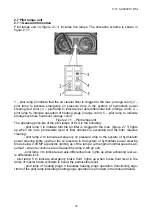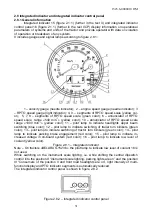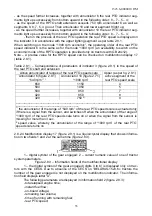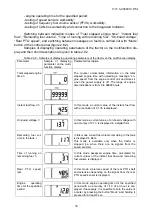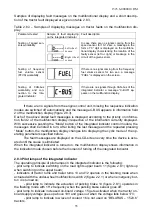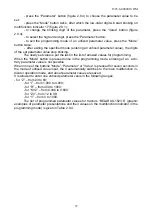
1523.6-0000010 OM
35
Samples of displaying fault messages on the multifunctional display and a short descrip-
tion of the tractor fault displayed are given in table 2.8.3.
Table 2.8.3 – Samples of displaying messages on tractor faults on the multifunction dis-
play
Parameter tested
Sample of fault displaying
on the Integrated Indicator
Fault description
Testing of speed sen-
sors workability
In case there are no signals coming from the
speed sensor for 10-12 sec. a message in the
form of “0” digit is displayed on the multifunc-
tional display characterizing the location of the
faulty sensor (left or right) or breakage in the
circuit of the given sensor.
Testing of frequency
fuel volume sensor
(FFVS) workability
If there is no signal coming from the frequency
fuel volume sensor for two sec. a message
“FUEL” is displayed on the screen.
Testing of CAN-bus
workability and con-
nection to the Inte-
grated Indicator
If there are no signals through CAN-bus of the
integrated indicator a message “C-BUS” ap-
pears on the multifunction display.
If there are no signals from the engine control unit, missing the respective indication
modes are switched off automatically and the message C-BUS appears in information field
2 of the multifunction display (figure 2.8.3).
Each of the above stated fault messages is displayed according to the priority on informa-
tion field 2 of the multifunction display irrespective of the information currently displayed.
With successive pushing the “Mode” button of the integrated indicator control module, the
messages shall be listed in turn. After listing the last message and the repeated pressing
“Mode” button, the multifunction display changes into displaying the cyclic mode of the op-
erating parameters specified before.
The fault messages are displayed on the LCD-screen every time the device is actu-
ated until the cause is eliminated.
When the integrated indicator is turned on, the multifunction display shows information in
the indication mode chosen before the moment of turning off the integrated indicator.
2.8.3 Pilot lamps of the integrated indicator
The operating principle of pilot lamps on the integrated indicator is the following:
- pilot lamp to indicate switching on the road lights upper beam 11 (figure 2.8.1) lights up
when switching on the upper beam;
- indicators of tractor turns and trailer turns 13 and 12 operate in the flashing mode when
actuated with the under-wheel multifunction switch 2 (figure 2.2.1) or when emergency but-
ton 4 is turned on;
- pilot lamp to indicate the actuation of parking brake 14 (figure 2.8.1) operates in
the flashing mode with 1 Hz frequency when the parking brake sensor goes off;
- pilot lamp to indicate increased on-board voltage 15 gets activated when the tractor on-
board supply voltage goes up above 19V and goes out when the voltage falls below 17V;
- pilot lamp to indicate low level of coolant 16 is not used on “BELARUS – 1523.6”
tractors.
Left wheel
sensor
Right wheel
sensor









